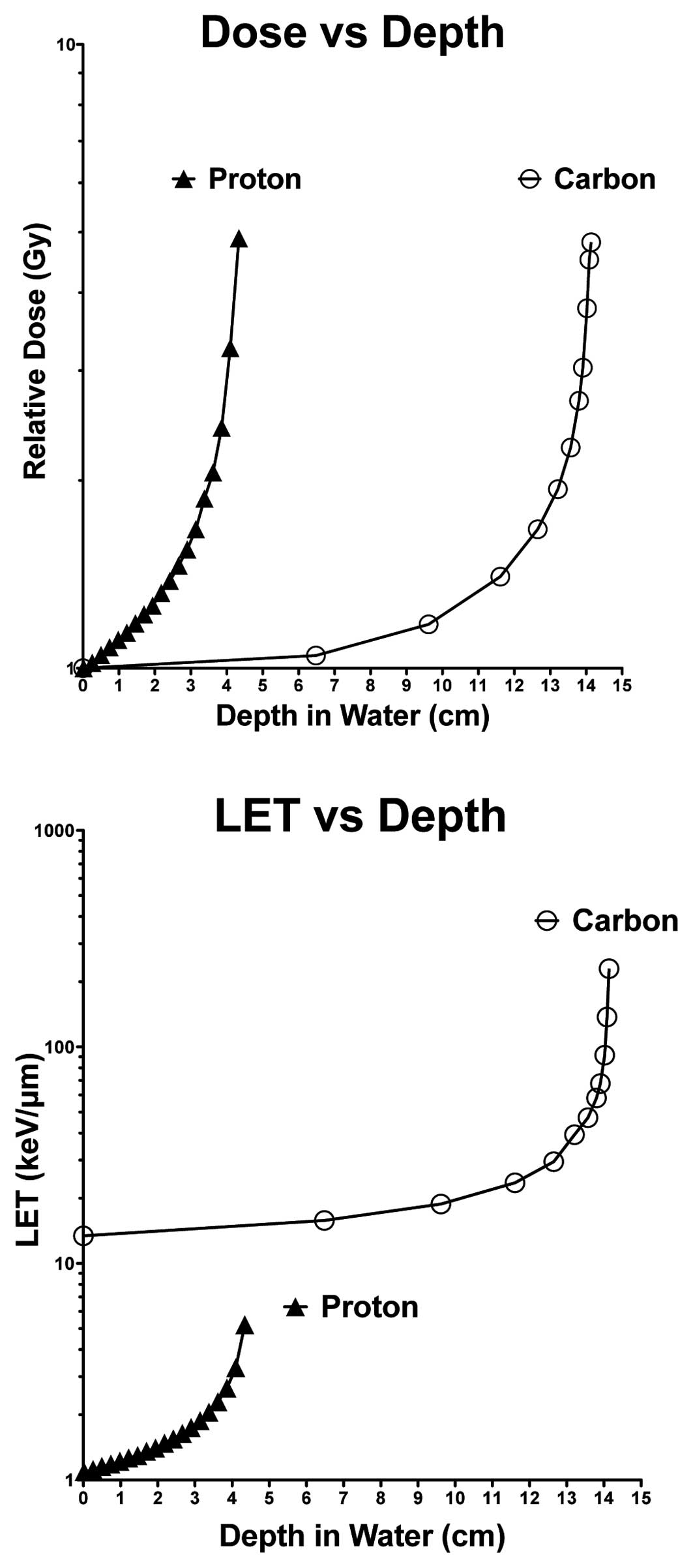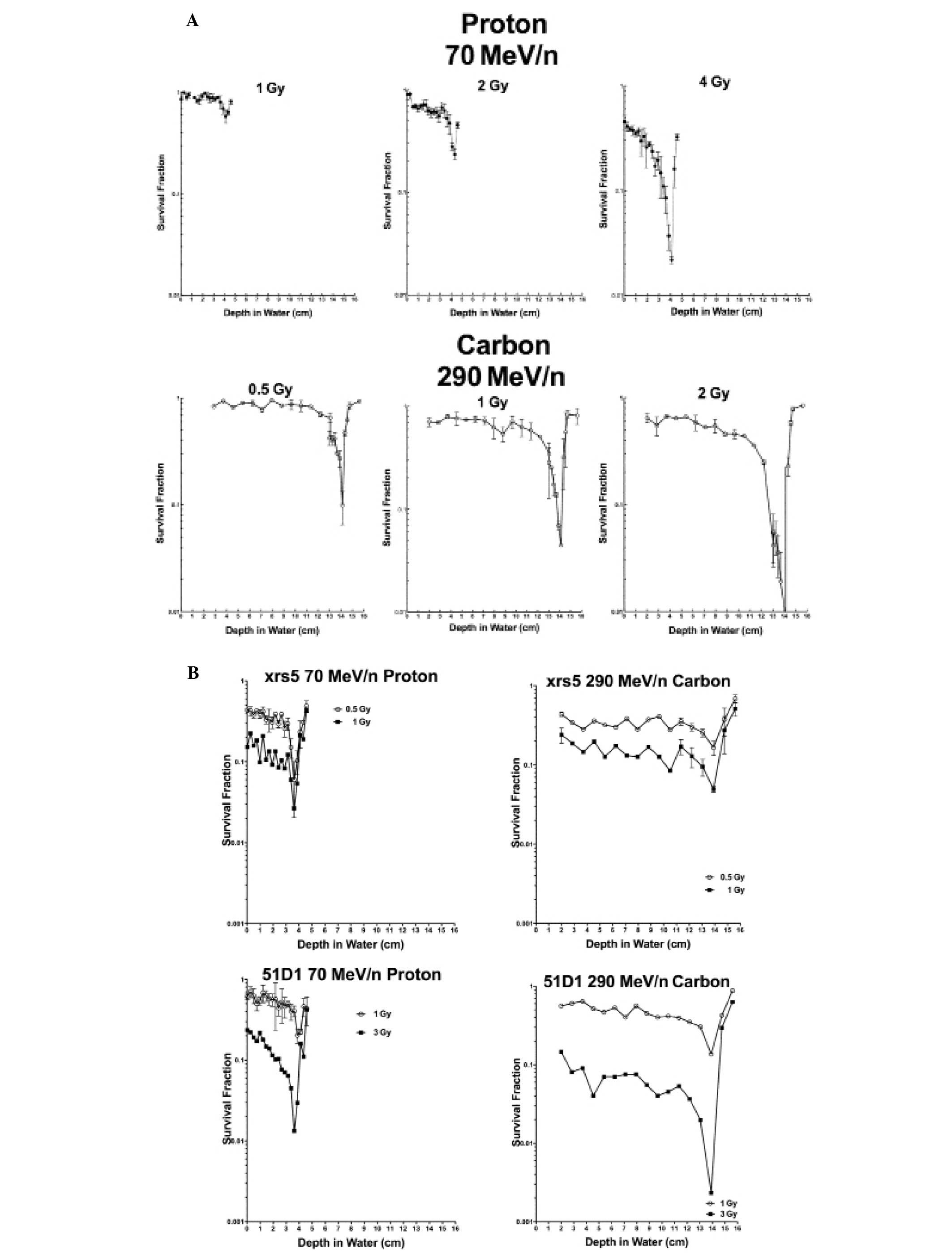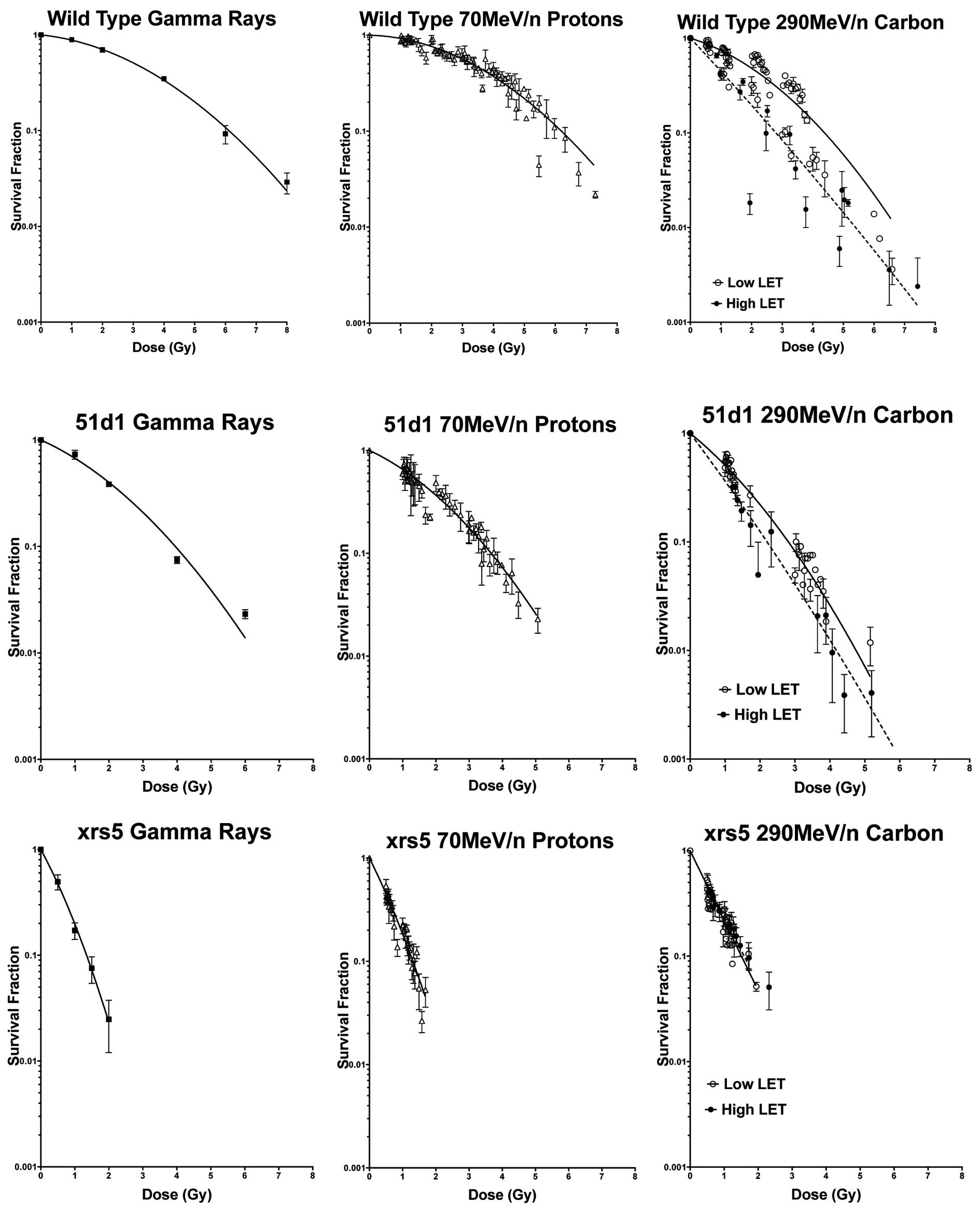|
1
|
Ares C, Hug EB, Lomax AJ, et al:
Effectiveness and safety of spot scanning proton radiation therapy
for chordomas and chondrosarcomas of the skull base: first
long-term report. Int J Radiat Oncol Biol Phys. 75:1111–1118. 2009.
View Article : Google Scholar : PubMed/NCBI
|
|
2
|
Hug EB and Slater JD: Proton radiation
therapy for chordomas and chondrosarcomas of the skull base.
Neurosurg Clin N Am. 11:627–638. 2000.PubMed/NCBI
|
|
3
|
Pontvert D: Value of proton therapy in
tumors other than melanomas of the eye and sarcomas of the base of
the skull. Pathol Biol. 41:1181993.(In French).
|
|
4
|
Munzenrider JE and Liebsch NJ: Proton
therapy for tumors of the skull base. Strahlenther Onkol. 175(Suppl
2): 57–63. 1999. View Article : Google Scholar : PubMed/NCBI
|
|
5
|
St Clair WH, Adams JA, Bues M, et al:
Advantage of protons compared to conventional X-ray or IMRT in the
treatment of a pediatric patient with medulloblastoma. Int J Radiat
Oncol Biol Phys. 58:727–734. 2004.PubMed/NCBI
|
|
6
|
Timmermann B: Proton beam therapy for
childhood malignancies: status report. Klin Padiatr. 222:127–133.
2010. View Article : Google Scholar : PubMed/NCBI
|
|
7
|
Hattangadi JA, Rombi B, Yock TI, et al:
Proton radiotherapy for high-risk pediatric neuroblastoma: early
outcomes and dose comparison. Int J Radiat Oncol Biol Phys. Dec
2–2011.(Epub ahead of print).
|
|
8
|
Mizoe JE, Hasegawa A, Jingu K, et al:
Results of carbon ion radiotherapy for head and neck cancer.
Radiother Oncol. 103:32–37. 2012. View Article : Google Scholar : PubMed/NCBI
|
|
9
|
Ishikawa H, Tsuji H, Kamada T, et al:
Carbon ion radiation therapy for prostate cancer: results of a
prospective phase II study. Radiother Oncol. 81:57–64. 2006.
View Article : Google Scholar : PubMed/NCBI
|
|
10
|
Combs SE, Kalbe A, Nikoghosyan A, et al:
Carbon ion radiotherapy performed as re-irradiation using active
beam delivery in patients with tumors of the brain, skull base and
sacral region. Radiother Oncol. 98:63–67. 2011. View Article : Google Scholar
|
|
11
|
Silari M: Applications of particle
accelerators in medicine. Radiat Prot Dosimetry. 146:440–450. 2011.
View Article : Google Scholar
|
|
12
|
Schulz-Ertner D, Nikoghosyan A, Thilmann
C, et al: Results of carbon ion radiotherapy in 152 patients. Int J
Radiat Oncol Biol Phys. 58:631–640. 2004. View Article : Google Scholar : PubMed/NCBI
|
|
13
|
Akutsu Y, Yasuda S, Nagata M, et al: A
phase I/II clinical trial of preoperative short-course carbon-ion
radiotherapy for patients with squamous cell carcinoma of the
esophagus. J Surg Oncol. 105:750–755. 2012. View Article : Google Scholar : PubMed/NCBI
|
|
14
|
Zhang H, Li S, Wang XH, et al: Results of
carbon ion radiotherapy for skin carcinomas in 45 patients. Br J
Dermatol. 166:1100–1106. 2012. View Article : Google Scholar : PubMed/NCBI
|
|
15
|
Paganetti H, Niemierko A, Ancukiewicz M,
et al: Relative biological effectiveness (RBE) values for proton
beam therapy. Int J Radiat Oncol Biol Phys. 53:407–421. 2002.
View Article : Google Scholar : PubMed/NCBI
|
|
16
|
Rodriguez-Lafrasse C and Balosso J: From
the carbon track to therapeutic efficiency of hadrontherapy. Cancer
Radiother. 16:16–24. 2012.PubMed/NCBI
|
|
17
|
Terasawa T, Dvorak T, Ip S, Raman G, Lau J
and Trikalinos TA: Systematic review: charged-particle radiation
therapy for cancer. Ann Intern Med. 151:556–565. 2009. View Article : Google Scholar : PubMed/NCBI
|
|
18
|
Carabe A, Moteabbed M, Depauw N, Schuemann
J and Paganetti H: Range uncertainty in proton therapy due to
variable biological effectiveness. Phys Med Biol. 57:1159–1172.
2012. View Article : Google Scholar : PubMed/NCBI
|
|
19
|
Tsunemoto H, Morita S, Ishikawa T, et al:
Proton therapy in Japan. Radiat Res (Suppl). 8:S235–S243. 1985.
View Article : Google Scholar
|
|
20
|
Wouters BG, Lam GK, Oelfke U, Gardey K,
Durand RE and Skarsgard LD: Measurements of relative biological
effectiveness of the 70 MeV proton beam at TRIUMF using Chinese
hamster V79 cells and the high-precision cell sorter assay. Radiat
Res. 146:159–170. 1996. View
Article : Google Scholar : PubMed/NCBI
|
|
21
|
Weyrather WK and Kraft G: RBE of carbon
ions: experimental data and the strategy of RBE calculation for
treatment planning. Radiother Oncol. 73(Suppl 2): S161–S169. 2004.
View Article : Google Scholar : PubMed/NCBI
|
|
22
|
Peschke P, Karger CP, Scholz M, Debus J
and Huber PE: Relative biological effectiveness of carbon ions for
local tumor control of a radioresistant prostate carcinoma in the
rat. Int J Radiat Oncol Biol Phys. 79:239–246. 2011. View Article : Google Scholar : PubMed/NCBI
|
|
23
|
Cui X, Oonishi K, Tsujii H, et al: Effects
of carbon ion beam on putative colon cancer stem cells and its
comparison with X-rays. Cancer Res. 71:3676–3687. 2011. View Article : Google Scholar : PubMed/NCBI
|
|
24
|
Frese MC, Yu VK, Stewart RD and Carlson
DJ: A mechanism-based approach to predict the relative biological
effectiveness of protons and carbon ions in radiation therapy. Int
J Radiat Oncol Biol Phys. 83:442–450. 2012. View Article : Google Scholar : PubMed/NCBI
|
|
25
|
Ando K and Kase Y: Biological
characteristics of carbon-ion therapy. Int J Radiat Biol.
85:715–728. 2009. View Article : Google Scholar : PubMed/NCBI
|
|
26
|
Jeggo PA and Kemp LM: X-ray-sensitive
mutants of Chinese hamster ovary cell line. Isolation and
cross-sensitivity to other DNA-damaging agents. Mutat Res.
112:313–327. 1983.PubMed/NCBI
|
|
27
|
Hinz JM, Tebbs RS, Wilson PF, et al:
Repression of mutagenesis by Rad51D-mediated homologous
recombination. Nucleic Acids Res. 34:1358–1368. 2006. View Article : Google Scholar : PubMed/NCBI
|
|
28
|
Weyrather WK, Ritter S, Scholz M and Kraft
G: RBE for carbon track-segment irradiation in cell lines of
differing repair capacity. Int J Radiat Biol. 75:1357–1364. 1999.
View Article : Google Scholar : PubMed/NCBI
|
|
29
|
Elsasser T, Weyrather WK, Friedrich T, et
al: Quantification of the relative biological effectiveness for ion
beam radiotherapy: direct experimental comparison of proton and
carbon ion beams and a novel approach for treatment planning. Int J
Radiat Oncol Biol Phys. 78:1177–1183. 2010. View Article : Google Scholar
|
|
30
|
Belli M, Cera F, Cherubini R, et al:
RBE-LET relationships for cell inactivation and mutation induced by
low energy protons in V79 cells: further results at the LNL
facility. Int J Radiat Biol. 74:501–509. 1998. View Article : Google Scholar : PubMed/NCBI
|

















